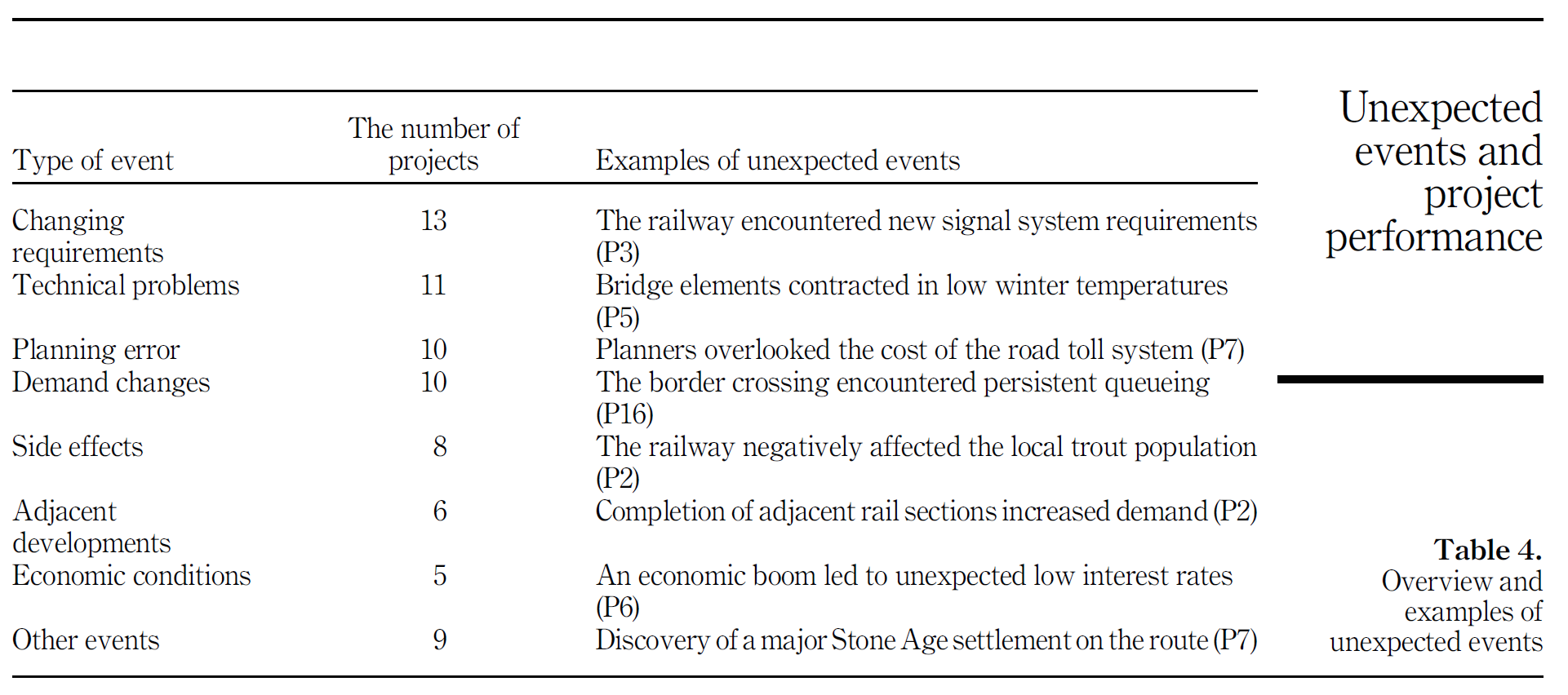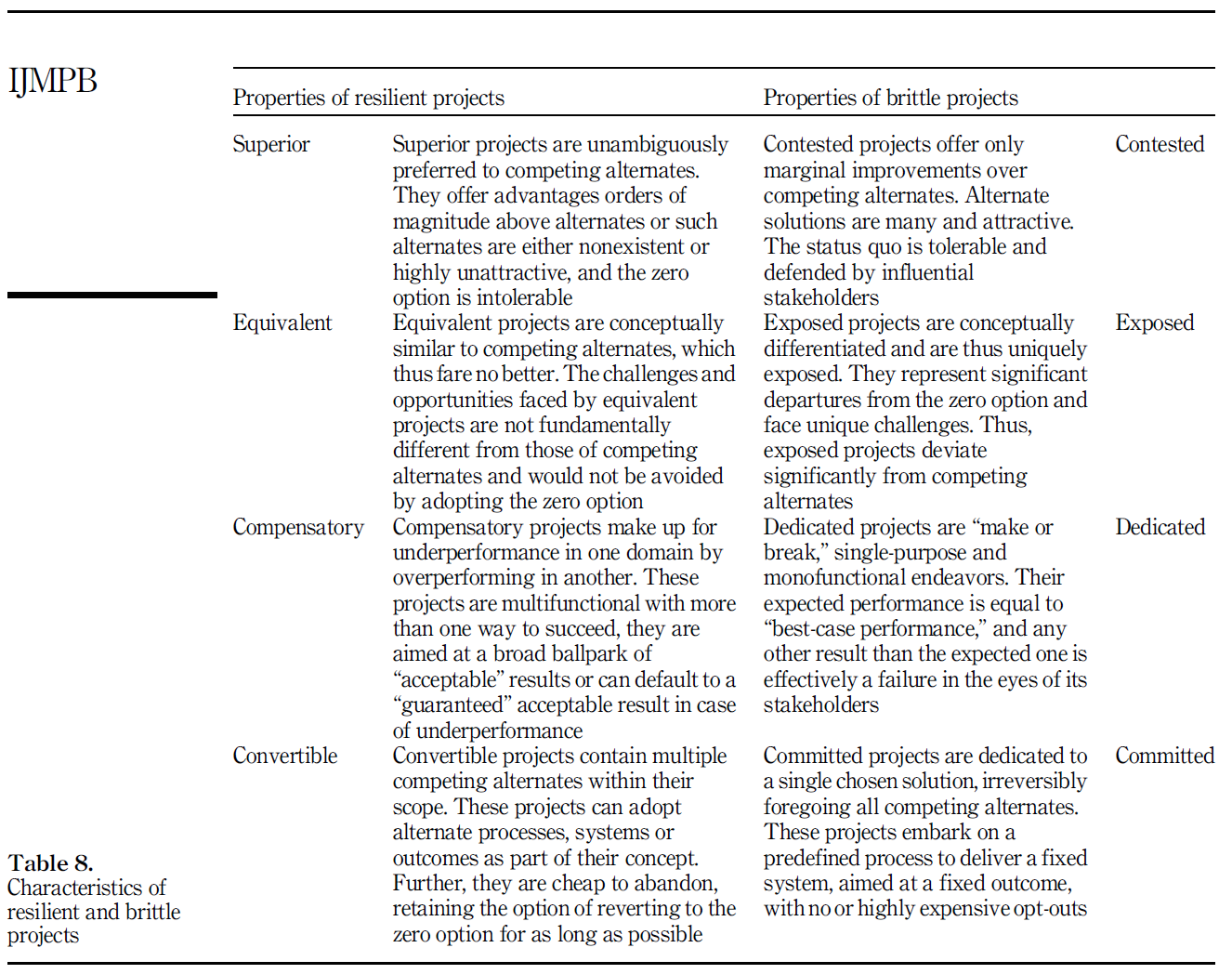Article: How megaprojects go wrong, but still succeed.
We have just published an article in the International Journal of Managing Projects in Business. In the article, we analysed ex-post evaluations of 21 infrastructure megaprojects in Norway. We looked at root causes of project issues, as well as analyzed the narratives of the project supporters and opponents.
Surprise, surprise: Do not fiddle with requirements (Wied et al 2021)
One of the paper findings is that - again - fiddling with project requirements is a really bad idea, but we just cannot help ourselves. I personally argue (beyond what we can claim from the data analysis) that a good chunk of “technical problems” also have their root cause in changing requirements. But it is typically more convenient to blame technology instead of our inability to deal productively with requirements.
Proponents and critics of projects pursued different narratives (Wied et al 2021)
We also looked at how proponents and critics of a project described it outcomes. First, not surprisingly, projects that formally underperform are criticized more frequently. Interesting though is that even underperforming projects are vigorously defended by their proponents (we shall take a look at the arguments in a second).
Regarding the criticism, we can discern three arguments:
The project was executed poorly (but we did address a real need with the right solution)
We picked the wrong solution (but there was a real need)
There was never a real need for the solution (and the project to implement it) in the first place
When it comes to the project supporters, we can discern 4 levels of a type of ‘defense in depth’ strategy, arguing that while not everything may be perfect, the project we had is still better than no project. The argumentation here has four levels:
Superiority: The way the project was implemented was superior to other implementations (of the same solution). Even if we do not reach our set targets - in that case, the targets were not realistic (but we got as close as humanly possible).
Equivalence: The way the project was implemented may not have been perfect, but all alternatives would have suffered the same problems.
Compensation: While we admit that for some time, other projects, solutions, or doing nothing, looked better than what we were doing, we managed to turn things around and ended up superior.
Convertibility: We realized that our project management approach and/or our solution that we started out with was not idea, and changed it to a more suitable project execution and/or solution alternative. (This also includes cases where the “zero option” of doing nothing was chosen, and projects abandoned to avoid further cost.)
Resilient projects afford you a ‘defense-in-depth’ capability, where mistakes and surprises do not lead to failure (Wied 2021)
The key message here is that successfull projects have properties that allow you to succeed, even when you make mistakes (or better: since you do not make mistakes, when absolutely unexpected and 100% unpredictable events occur). Resilient projects are
Superior - clearly better than the competing alternatives, instead of offering marginal improvements over the status quo that other solutions would provide in a similar way.
Equivalent - projects that are conceptually similar to their alternatives, but in fact so similar that all projects in the pool of alternatives would effectively face the same challenges. This contrasts to projects that have specific, unique risks from the get-go that alternatives would not have faced.
Compensatory - projects that offer opportunities to compensate underperformance in one area with overperformance in another. They offer alternative paths to “success”, and there is a wider range of acceptable outcomes. Brittle projects on the other hand have central and highly risks “make or break” functions, and their performance is expected to be class-leading. (As I keep telling my students: Underpromise, and then overdeliver. Not the other way around.)
Convertible - projects that are really portfolios of projects, actively exploring and de-risking competing alternatives in early project phases. They have built-in capabilities to switch to alternative solutions (and execution models) as reality unfolds and the true requirements of stakeholders (and limitations of technology) are discovered. The alternative are brittle projects that are exclusively dedicated to a single possible solution and execution model, not investing at all in exploring credible alternatives, and with very high costs of abandoning the project.
Please find the abstract below (and the article itself at the links at the top) - give it a read, it is good fun!
Citation
Wied, M., Oehmen, J., Welo, T., & Pikas, E. (2021). Wrong, but not failed? A study of unexpected events and project performance in 21 engineering projects. International Journal of Managing Projects in Business, ahead-of-print. https://doi.org/10.1108/IJMPB-08-2020-0270
Abstract
Purpose
Most complex engineering projects encounter unexpected events through their life cycle. These are traditionally attributed to inaccurate foresight and poor planning. Outlining a nonanticipatory alternate, the authors seek to explain the ability to rebound from unexpected events, without foresight, using resilient systems theory. This paper seeks to outline the theoretical underpinnings of project resilience and to identify criteria for planning and selecting projects for greater resilience.
Design/methodology/approach
Investigating project resilience, this paper studies the relationship between unexpected events and project performance in 21 projects. The authors perform a systematic review of project ex post evaluations 3–12 years after project completion.
Findings
First, the authors find that all projects encountered unexpected events, even when discounting planning error. Second, the authors show that, as a consequence, projects underperformed, not necessarily relative to formal criteria, but in terms of subjective opportunity cost, that is, relative to competing alternates – known or imagined – foregone by their implementation. Finally, the authors identify four types of resilient projects – superior, equivalent, compensatory and convertible projects – as opportunities for building project resilience.
Practical implications
The properties of resilient projects provide opportunities for building resilience in complex projects. Originality/value: Departing from traditional efforts to “de risk” plans and “de-bias” planners, this paper focuses on the properties of projects themselves, as an alternate to improved foresight and up-front planning.


